Frosting represents a baker’s artistic touch—a sweet, creamy topping that transforms a simple cake into a work of art. However, not all frostings offer the same level of complexity. While some remain delightfully simple, requiring just a whisk and a few ingredients, others rank among the hardest frostings to make because they demand precision, patience, and a touch of culinary finesse.
So, what makes a frosting particularly difficult to prepare? Factors like temperature sensitivity, ingredient ratios, and technique often define the level of challenge. For instance, bakers frequently consider Swiss meringue buttercream, French buttercream, and ganache as some of the most challenging frostings to master. These recipes not only require precise instructions but also demand experience, skill, and a clear understanding of how ingredients behave under different conditions.
Therefore, this article examines the world of frosting, diving into the intricacies of the hardest frostings to make. Whether you’re a seasoned baker refining your skills or a curious beginner eager to tackle difficult frosting recipes, this guide will walk you through the most demanding techniques and, most importantly, teach you how to succeed with them. For a simpler yet equally delicious option, check out our Peanut Butter Frosting Recipe for a creamy and delightful treat.
Exploring the Basics of Frosting
Frosting is more than just a sweet layer atop a cake; it’s a key element that affects taste, texture, and presentation. There are countless types of frostings, each with its own unique qualities. Understanding the basics of frosting is the first step in mastering even the most complex recipes.
Overview of Frosting Types
Before diving into the hardest frostings, let’s explore the common categories:
- Buttercream Frosting
Buttercream is a versatile and popular choice. It’s made by creaming butter and sugar together, often with added flavorings. While American buttercream is straightforward, others like Swiss, Italian, and French buttercream require more advanced techniques. - Royal Icing
Made from powdered sugar, egg whites, and sometimes lemon juice, royal icing dries to a smooth, hard finish. It’s ideal for intricate designs but demands precision in consistency. - Ganache
A luxurious combination of chocolate and cream, ganache can be used as a glaze, filling, or frosting. Achieving the right consistency requires careful attention to the ratio of chocolate to cream. - Cream Cheese Frosting
A tangy, sweet frosting often used for carrot cakes or red velvet cakes. While delicious, it’s less technically demanding than other types. - Whipped Cream Frosting
Light and airy, this frosting is made by whipping heavy cream with sugar and stabilizers. It’s one of the simpler frostings but has a shorter shelf life.
Differences Between Simple and Complex Frostings
Not all frostings are equally challenging to create. What sets complex frostings apart are factors such as:
- Temperature Sensitivity: Many advanced frostings require precise temperature control to achieve the right texture.
- Ingredient Stability: Frostings like Swiss meringue buttercream rely on emulsification, which can break down if not handled properly.
- Technical Techniques: Advanced methods such as whipping meringue, stabilizing cream, or tempering chocolate can add layers of complexity.
For beginner bakers, starting with simpler frostings like American buttercream or whipped cream frosting helps build confidence. But for those ready to take on a challenge, Swiss meringue buttercream or ganache offers a chance to test precision and technique.
Swiss Meringue Buttercream: One of the Hardest Frostings to Make
Swiss meringue buttercream (SMBC) is a frosting revered for its silky smooth texture, less sweetness compared to traditional buttercream, and impressive versatility in decoration. Nevertheless, it is also widely regarded as one of the hardest frostings to perfect. In fact, its preparation requires both precision and patience, making it a true test of skill for even experienced bakers.
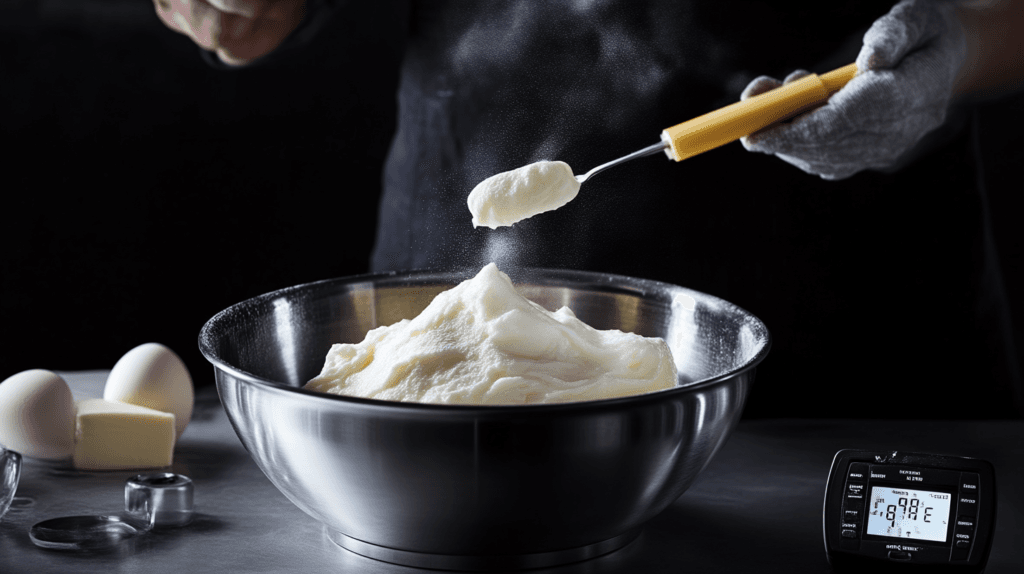
Ingredients Required
Swiss meringue buttercream uses simple ingredients, but their preparation requires meticulous attention. The primary ingredients include:
- Egg Whites: The base of the meringue. They must be free from any traces of yolk.
- Sugar: Dissolved into the egg whites to create a stable meringue.
- Butter: Room-temperature butter is gradually incorporated to provide the creamy texture.
- Vanilla or Flavorings: Enhances the taste without overpowering the frosting’s subtle sweetness.
While the ingredient list is short, the success of the frosting depends heavily on how they are combined and handled.
Key Preparation Steps
Creating Swiss meringue buttercream involves several steps, each requiring precision:
- Heating the Egg Whites and Sugar:
Egg whites and sugar are whisked together over a double boiler until the sugar dissolves, and the mixture reaches 160°F (71°C) to ensure food safety. - Whipping the Meringue:
Once the egg white mixture is heated, it is whipped until stiff, glossy peaks form. This step ensures the structure of the frosting. - Incorporating Butter:
Room-temperature butter is added gradually, allowing it to emulsify into the meringue without curdling. - Flavoring and Final Mixing:
Flavorings like vanilla are added, and the buttercream is mixed until it reaches the desired consistency.
Why Swiss Meringue Buttercream Is One of the Hardest Frostings to Make
Swiss meringue buttercream poses challenges that can frustrate even experienced bakers:
- Temperature Sensitivity:
- The egg white mixture must be heated to a specific temperature. Too hot, and it cooks the egg whites; too cool, and the sugar won’t dissolve.
- The butter must be at room temperature—too cold, and it won’t incorporate; too warm, and the frosting becomes soupy.
- Stability Issues:
- If not whipped properly, the meringue may collapse, resulting in a runny frosting.
- The mixture can curdle if the butter is added too quickly or if the temperature isn’t right.
- Time and Patience:
- Swiss meringue buttercream is not a quick frosting. It requires time to heat, whip, and emulsify correctly.
Troubleshooting Swiss Meringue Buttercream
Bakers often encounter these common issues when making SMBC:
- Runny Frosting: If the mixture is too warm, refrigerate briefly and re-whip.
- Curdling: If the buttercream looks separated, continue whipping. The mixture often comes back together.
- Grainy Texture: Undissolved sugar in the meringue can cause graininess. Ensure the egg whites and sugar are heated thoroughly.
Despite these challenges, Swiss meringue buttercream is worth the effort for its unmatched texture and versatility. Its adaptability for piping, smooth finish, and ability to hold flavors make it a favorite for professional bakers and decorators.
French Buttercream: A Difficult Frosting to Perfect
French buttercream is a luxurious frosting that stands out for its rich flavor and creamy texture. Made with egg yolks instead of egg whites, it has a deeper, custard-like consistency compared to other buttercreams. However, its preparation requires advanced skills, precise timing, and control over temperature, making it one of the most challenging frostings to master.
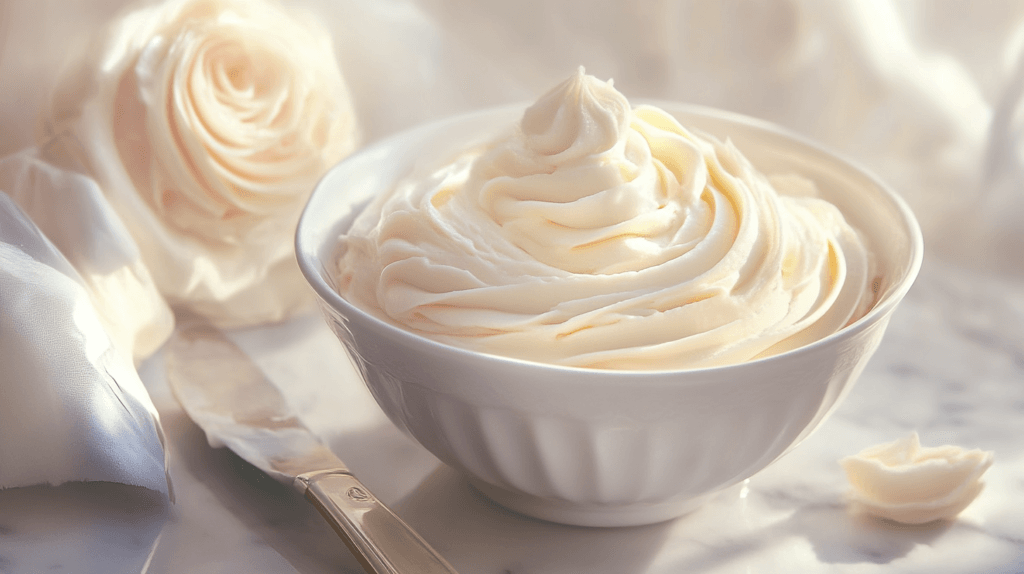
Unique Characteristics of French Buttercream
French buttercream is distinctive for several reasons:
- Richness: The inclusion of egg yolks creates a dense, velvety frosting with a rich flavor profile.
- Smooth Texture: Its buttery consistency makes it ideal for spreading and intricate piping designs.
- Customizable Flavor: French buttercream is versatile and easily flavored with extracts, liqueurs, or purees.
This frosting is commonly used for sophisticated desserts where both taste and texture need to shine.
The Preparation Process
Making French buttercream involves these essential steps:
- Creating a Sugar Syrup:
Sugar and water are boiled to 238°F (115°C), also known as the “soft-ball stage.” Achieving the correct temperature is critical, as undercooking or overcooking the syrup will ruin the frosting’s structure. - Whipping the Egg Yolks:
The egg yolks are whipped to a pale, thick consistency. This step incorporates air, which is essential for the frosting’s texture. - Adding the Sugar Syrup:
The hot sugar syrup is poured in a slow, steady stream into the whipped yolks while continuing to mix. This step requires precision, as pouring too quickly can scramble the yolks, while pouring too slowly can cause the syrup to harden. - Incorporating Butter:
Room-temperature butter is added gradually, allowing it to emulsify into the mixture and create the final creamy consistency.
Challenges in Preparation
- Temperature Control:
- The sugar syrup must reach the exact temperature to properly stabilize the egg yolks. A kitchen thermometer is essential.
- Butter must be at the right temperature to blend seamlessly. Too cold, and it won’t mix; too warm, and it will make the frosting soupy.
- Technique:
- Pouring the sugar syrup into the egg yolks requires a steady hand and patience. Disrupting the process can lead to lumps or a failed emulsion.
- Timing:
- French buttercream demands uninterrupted focus during preparation. Even a brief delay can impact its final texture.
Troubleshooting French Buttercream
Some common issues and their solutions include:
- Curdling: If the frosting separates, continue beating it. If it doesn’t come together, warm the bowl slightly to help the butter emulsify.
- Soupy Texture: This happens if the butter is too warm or added too quickly. Refrigerate the frosting for 10-15 minutes, then re-whip.
- Grainy Consistency: This occurs when the sugar syrup crystallizes or the egg yolks cook during pouring. To avoid this, ensure the sugar syrup is poured slowly and steadily while mixing continuously.
Comparing French Buttercream to Other Buttercreams
Bakers often compare French buttercream to its counterparts, such as Swiss and Italian meringue buttercreams:
- Richness: French buttercream is the richest due to the egg yolks, while Swiss and Italian meringue buttercreams are lighter.
- Stability: French buttercream is less stable in warm temperatures compared to Swiss and Italian varieties.
- Complexity: All three are challenging, but French buttercream’s use of a hot sugar syrup and egg yolks adds a layer of complexity.
Despite the challenges, French buttercream is prized for its decadent flavor and silky texture. With practice and precision, bakers can create a frosting that elevates any dessert to gourmet status.
Chocolate Ganache: A Complex Frosting to Master
Chocolate ganache is a versatile and decadent frosting made with just two primary ingredients: chocolate and cream. Despite its simplicity, ganache is considered one of the hardest frostings to make due to its intricate demands. Whether you’re crafting a glossy glaze, a smooth frosting, or a thick filling, achieving the right consistency requires mastery of ratios, temperature control, and technique. Its versatility makes it a favorite, but the precision required to perfect this challenging frosting truly tests a baker’s skill.
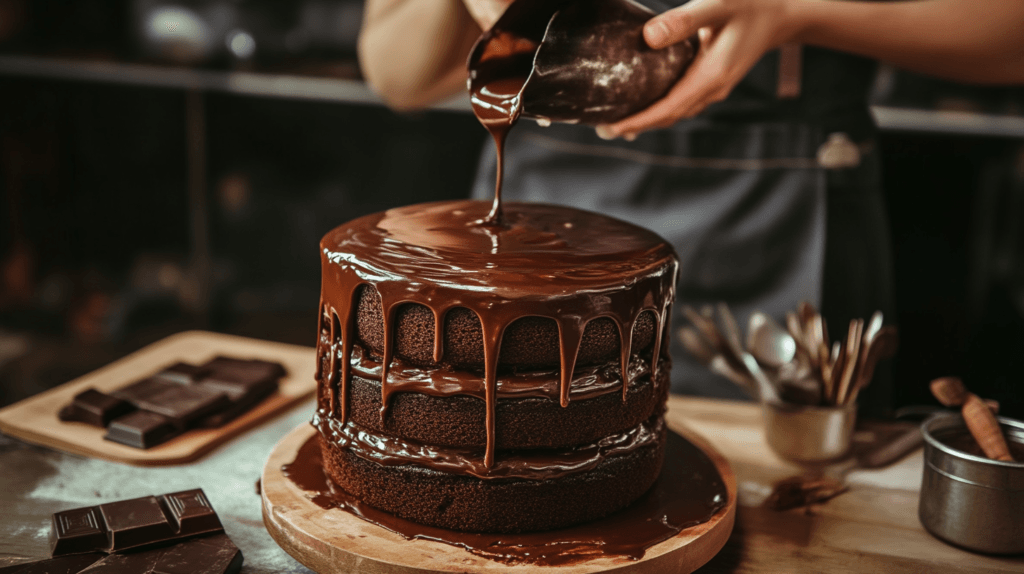
The Importance of Ratios in Ganache
The texture and use of ganache depend heavily on the ratio of chocolate to cream:
- Thin Ganache (1:2 Ratio)
- Used as a glaze or pourable coating.
- Contains more cream than chocolate, creating a liquid consistency.
- Medium Ganache (1:1 Ratio)
- Ideal for frosting or spreading on cakes.
- Achieves a balance of firmness and creaminess.
- Thick Ganache (2:1 Ratio)
- Used for truffles or as a stable filling.
- Has a higher chocolate content, resulting in a firm texture.
Getting the ratio right is essential for the desired application. A misstep can lead to ganache that’s too runny or too stiff to work with.
Temperature Control Challenges
Ganache is highly sensitive to temperature, and controlling it is one of the biggest hurdles:
- Heating the Cream:
- The cream must be heated just to a simmer, not a boil. Overheating can scald the cream, affecting both flavor and consistency.
- Melting the Chocolate:
- The chocolate should melt evenly when mixed with the cream. Using cream that is too hot or too cold can cause the chocolate to seize or separate.
Common Ganache Techniques
Depending on its intended use, ganache requires specific handling techniques:
- Making a Smooth Ganache:
- To ensure a velvety texture, whisk the chocolate and cream gently. Overmixing can incorporate too much air, making the ganache grainy.
- Whipping Ganache:
- For a lighter frosting, ganache can be whipped after cooling. Timing is critical; whip it too soon, and it won’t hold air properly.
- Chilling Ganache:
- When used as a filling, ganache must be cooled until it reaches a spreadable consistency. If over-chilled, it can harden, making it difficult to work with.
Why Ganache Can Be Tricky
Several factors contribute to ganache’s difficulty:
- Quality of Ingredients:
- The flavor and texture depend on using high-quality chocolate with the correct cocoa butter content. Low-quality chocolate can result in a greasy or gritty ganache.
- Separation Issues:
- If the emulsion breaks, the ganache may separate into oily and watery layers. Fixing a separated ganache requires reheating gently and re-mixing.
- Achieving the Right Texture:
- Finding the perfect balance between firm and soft is a delicate process that requires experience and a keen eye.
Troubleshooting Chocolate Ganache
Even seasoned bakers encounter issues with ganache. Here’s how to resolve common problems:
- Ganache Too Thin:
- Add more melted chocolate to thicken it.
- Ganache Too Thick:
- Gradually stir in warm cream to loosen the consistency.
- Grainy Texture:
- Reheat the ganache gently over a double boiler and whisk until smooth.
- Separation:
- Blend the ganache using an immersion blender to re-emulsify the ingredients.
Why Ganache Is Worth the Effort
Despite its challenges, ganache is a baker’s best friend. Its versatility allows it to be used in countless ways, from elegant drips on a cake to decadent fillings for truffles. Perfecting ganache requires patience and practice, but the results are always rewarding.
Royal Icing: Among the Hardest Frostings to Make
Royal icing, which is known for its glossy finish and ability to harden, remains a staple in decorating cookies, gingerbread houses, and intricate cake designs. Nevertheless, its preparation and usage can be frustratingly complex, especially when it comes to achieving the perfect consistency.
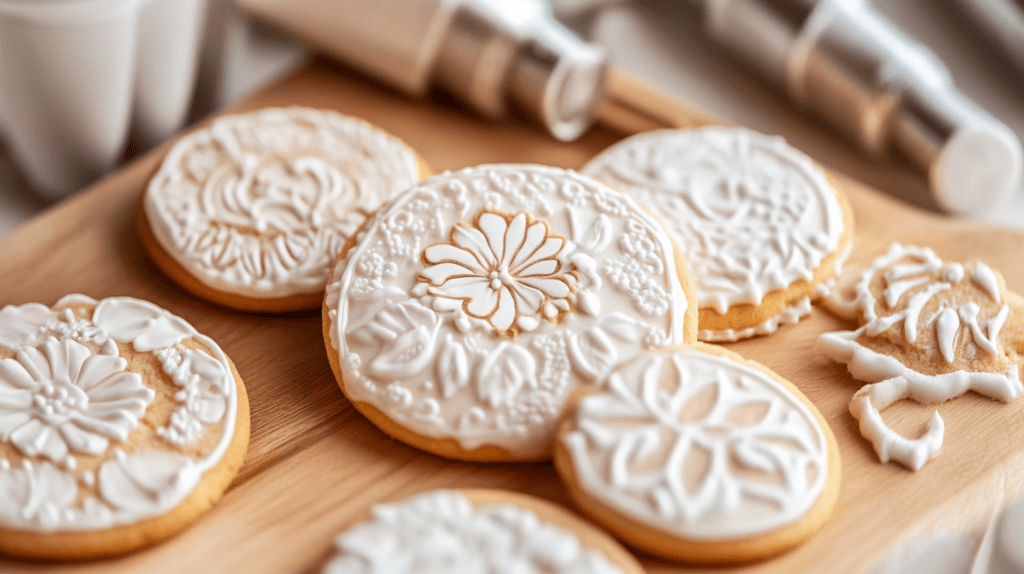
The Key to Perfect Royal Icing
Royal icing typically consists of three ingredients:
- Powdered Sugar: The base for sweetness and structure.
- Egg Whites or Meringue Powder: Acts as a stabilizer and gives the icing its characteristic hardness.
- Liquid (Water or Lemon Juice): Adjusts the consistency for different uses, from flooding to piping.
The real challenge, however, lies in balancing these ingredients. For example, adding too much liquid results in icing that’s too runny, whereas too little liquid makes it overly stiff and difficult to work with.
Consistency Challenges
Flooding Consistency:
- Used to create a smooth surface for cookies. Achieving the right texture requires careful addition of liquid, drop by drop, while mixing.
- Stiff Consistency:
- Ideal for detailed piping or flowers. Overmixing can result in air bubbles, which disrupt the design.
- Medium Consistency:
- A versatile middle ground for borders and writing. Maintaining this balance is difficult without experience.
Common Problems and Solutions for the Hardest Frostings to Make
- Drying Time:
- Royal icing can take several hours to harden fully. Humidity delays the process, often leading to smudges. Use a fan or dehumidifier for quicker drying.
- Cracking:
- If applied too thickly, the icing may crack as it dries. Keep layers thin and even for a flawless finish.
- Color Bleeding:
- Vibrant colors can bleed into each other if the base layer isn’t fully dry. Allow adequate drying time between layers.
Advanced Techniques for Mastering the Hardest Frostings to Make
As bakers master challenging frostings like Swiss meringue buttercream, French buttercream, and ganache, they often move on to advanced techniques that push the boundaries of creativity.
- Italian Meringue Buttercream:
- Similar to Swiss meringue buttercream but made by pouring hot sugar syrup into whipped egg whites. It’s more stable but equally challenging.
- Whipped Ganache:
- Whipping ganache adds air, creating a light and fluffy frosting. Perfect timing is critical to prevent it from becoming grainy.
- Stabilized Whipped Cream:
- Bakers often use gelatin or cream cheese to stabilize whipped cream, ensuring it is suitable for longer-lasting decorations.
- Mirror Glazes:
- These glossy finishes require precise temperature control and careful pouring for a flawless surface.
Tools and Tips for Mastering the Hardest Frostings to Make
Mastering complex frostings becomes easier with the right tools and techniques:
- Tools:
- Use a kitchen thermometer for precise temperature control.
- A stand mixer is essential for achieving the right consistency in meringues and buttercreams.
- Offset spatulas and piping bags help in smooth application and decoration.
- Techniques:
- Work in a cool environment to prevent butter-based frostings from melting.
- Always measure ingredients accurately, as small deviations can lead to big problems.
- Practice patience and persistence, as mastering these frostings takes time.
FAQs About the Hardest Frostings to Make
1. What’s the easiest frosting to make?
American buttercream is the simplest, requiring just butter, powdered sugar, and a mixer.
2. Can I fix a failed frosting?
Yes. Chill and re-whip runny frosting to restore its texture. Curdled buttercream often comes back together with continued mixing or gentle warming.
3. What’s the best frosting for beginners?
Cream cheese frosting or American buttercream are forgiving and easy to adjust.
4. How can I stabilize frosting for hot climates?
Use stabilizers like gelatin in whipped cream or cornstarch in buttercream to prevent melting.
5. What are vegan alternatives to tricky frostings?
Bakers often choose aquafaba-based meringues and coconut cream ganache as popular plant-based options.
6. Why does frosting sometimes separate?
Temperature issues or incorrect mixing can cause separation. Re-emulsify by gently warming and re-whipping the mixture.
Conclusion
Mastering the hardest frostings to make, such as Swiss meringue buttercream, French buttercream, chocolate ganache, and royal icing, truly tests a baker’s skill. Each of these difficult frostings demands precision, patience, and practice, presenting a significant challenge even for experienced bakers. Nevertheless, bakers who use the right tools, techniques, and persistence can gradually overcome the complexities of these challenging frostings.
For instance, if you’re working with peanut butter frosting and find it’s not turning out as smooth as you’d like, there are expert tips to help you fix it. (Learn why peanut butter frosting might not be smooth and how to fix it here.) Additionally, incorporating a secret ingredient can elevate your frosting game, making even the trickiest recipes more manageable. (Discover the secret ingredient for frosting here.)
Once you’ve perfected your frosting, you might also wonder about storage. For example, does peanut butter frosting need refrigeration? The answer depends on the ingredients used and how long you plan to store it. (Find out whether peanut butter frosting needs refrigeration here.)
Moreover, the effort pays off, as perfecting the hardest frostings to make transforms ordinary desserts into stunning masterpieces that impress everyone every time.

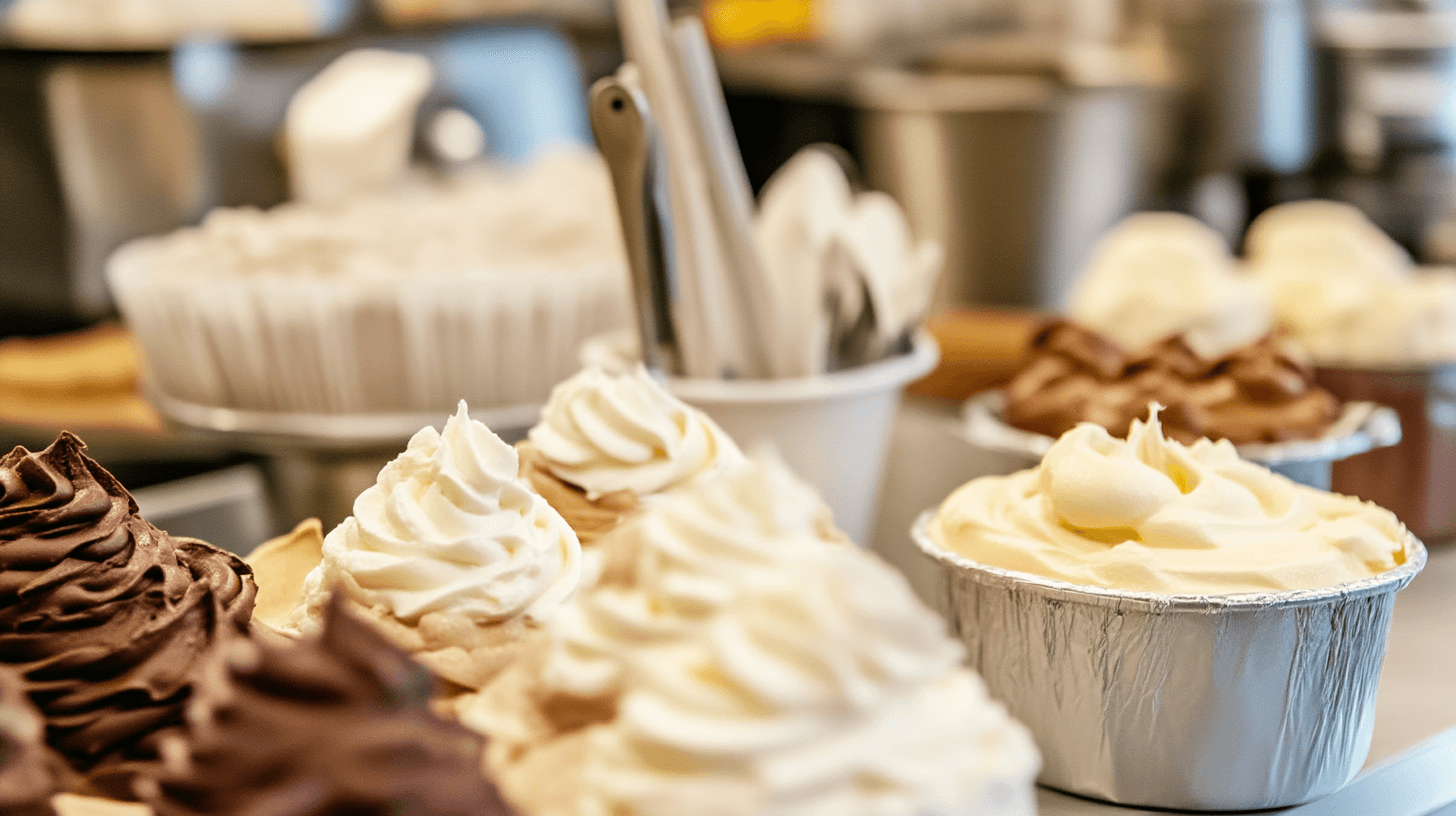
1 thought on “The Hardest Frostings to Make:”